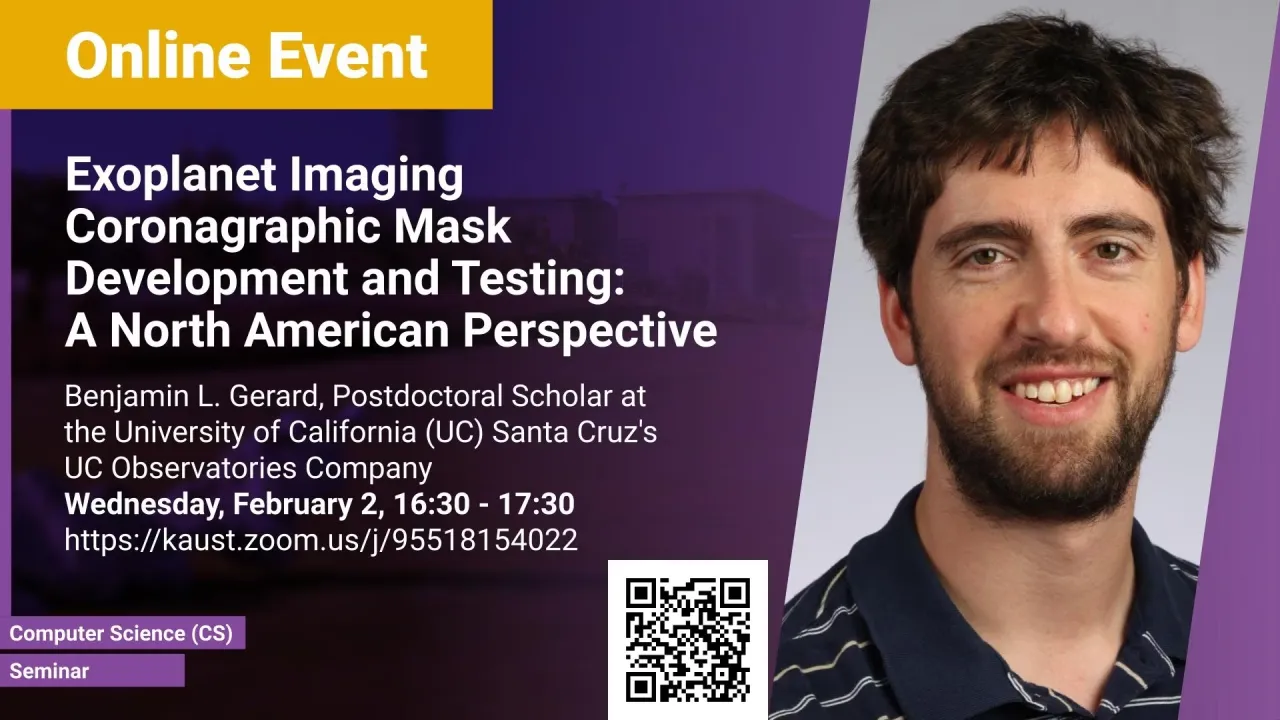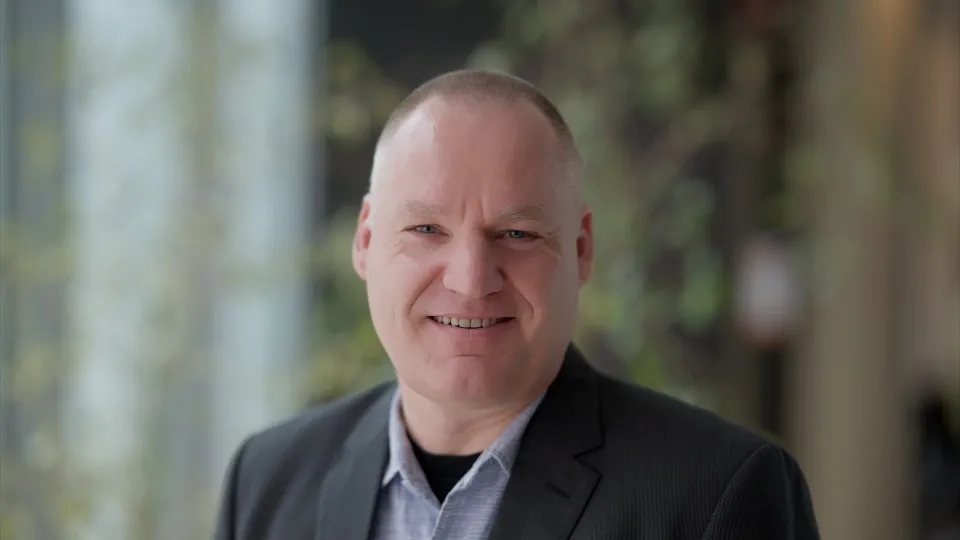
Exoplanet Imaging Coronagraphic Mask Development and Testing: A North American Perspective
- Benjamin L. Gerard, Postdoctoral Scholar, University of California, UC Observatories
KAUST
Over 4000 exoplanets - planets beyond the Solar System - have been discovered since the first Nobel prize-winning exoplanet detection around a Sun-like star in 1995. The majority of these exoplanets have been detected by indirect methods, inferring the presence of the exoplanet by observing the star.
Overview
Abstract
Over 4000 exoplanets - planets beyond the Solar System have been discovered since the first Nobel prize-winning exoplanet detection around a Sun-like star in 1995. The majority of these exoplanets have been detected by indirect methods, inferring the presence of the exoplanet by observing the star. However, due to long-standing technical challenges, less than 1% of all known exoplanets have been directly detected, where the glare of the host star is attenuated enough to recover the exoplanet light directly. A coronagraph is a type of instrument designed precisely to do this. I will highlight my efforts as a researcher both as a PhD student at the National Research Council of Canada and now as a postdoc at the University of California Santa Cruz in developing such coronagraph technologies, including through collaboration with the KAUST Visual Computing Center. This talk will be geared broadly towards KAUST students in science and engineering, focusing both holistically on my research and also giving my own perspective on the infrastructure in Canada and the United States that have enabled me to carry out this research.
Brief Biography
Dr. Benjamin L. Gerard is a Postdoctoral Scholar at the University of California (UC) Santa Cruz's UC Observatories working on developing technologies for imaging planets around other stars, or exoplanets. Originally from San Francisco, California, he completed his undergraduate studies in Physics and Astronomy at the University of Colorado at Boulder. He then moved to Victoria, British Columbia, Canada to complete a Masters and then Doctorate degree in Physics at the University of Victoria, working primarily at the National Research Council of Canada's Herzberg Astronomy & Astrophysics division, also in Victoria. His Masters and Doctorate research focused on developing new exoplanet imaging technologies. In his spare time he is also an avid hiker, ice hockey player, and trumpet player.
